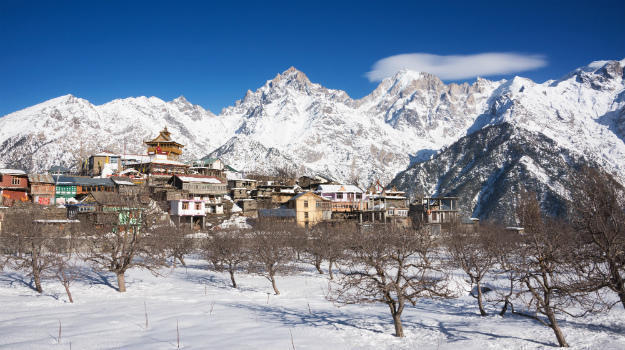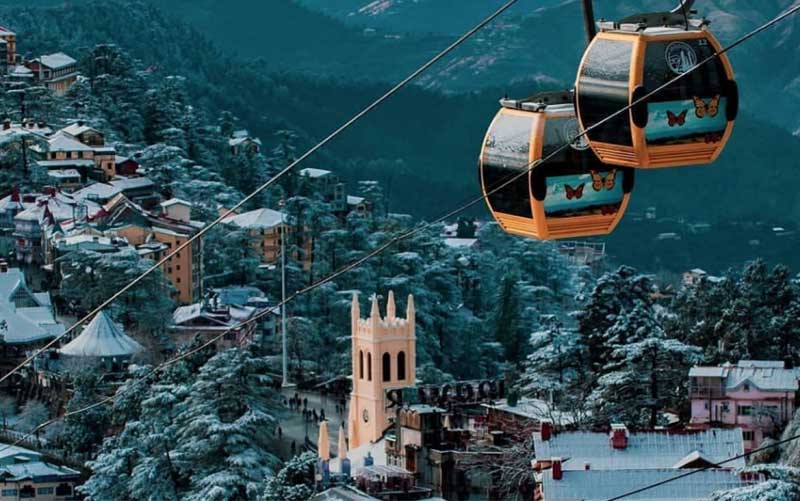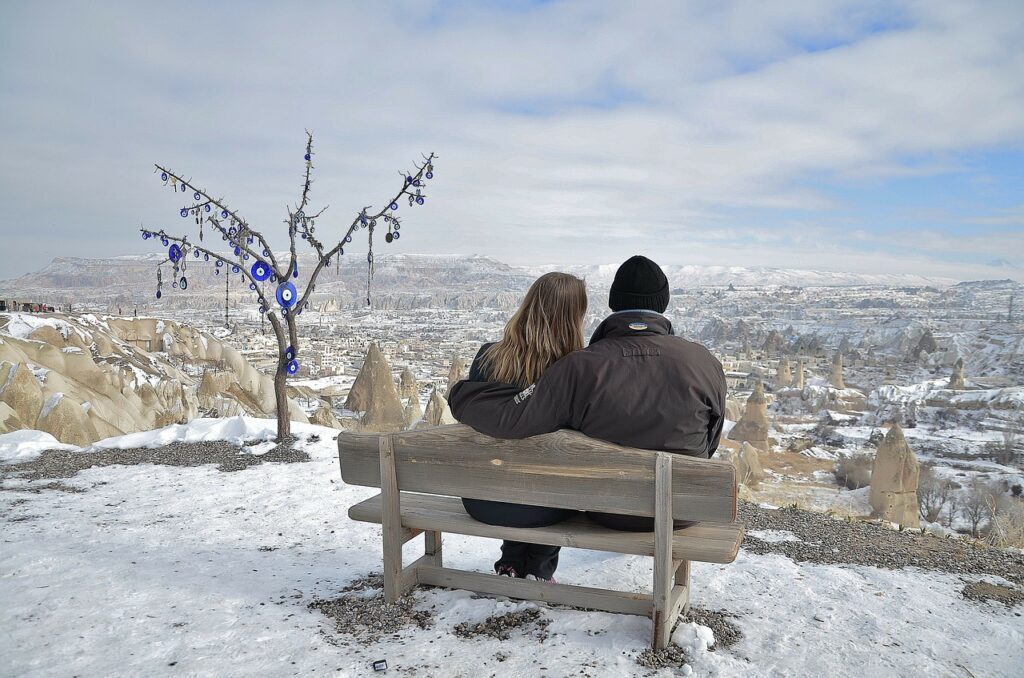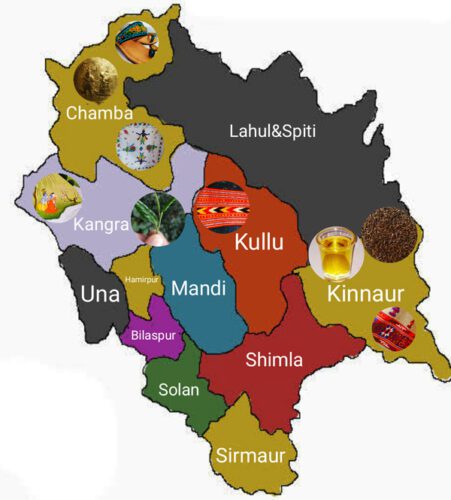Spiti – Glittering Lakes, World’s Highest Villages and Beautiful Cold Deserts
Even though the road is excellent, the Spiti path is the best way to get as close as possible to Shangri-La. Spiti is home to more than isolated temples and beautiful mountains, but you won’t be able to sleep in the same bed as the Dalai Lama when he’s in town.
The start of the many events that are held in this part of Spiti is a great reason to be happy all year long. At the end of the Chakhar Mela, which happens every three years at the end of September, the local Lamas perform the Chham dance, a mask dance. Spiti will always remind you of a harsh desert with a few lonely temples perched on rocks against a bright blue sky. Spiti has beautiful lakes and some of the highest towns in the world where people live.
This area seems like an undiscovered desert because it has yet to be developed for tourists. It also has a small population and is a great place to go camping. Spiti is a great place to go on a road trip because it is high up and has beautiful scenery. It’s been compared to Ladakh before it got too crowded with tourists, and it could be a snow leopard’s home.
Places to visit in Spiti
Dhankar Lake HikeDhankar Lake Hike
The old Dhankar temple has walls made of mud and dirt that stand out against the clear blue sky. You can get to Dhankar Lake after a short conversation with the monks at the monastery and a strenuous three-kilometer hike through a scenery of barren hills and beautiful views of snow-covered peaks.You’ll need a walking stick to get down this path, which is almost too steep and has many small rocks on top of the sand. When the Spiti and Pin rivers meet at their source, it’s a beautiful sight. This tour is one you will remember. The blue waters of Dhankar Lake, which is in the bleak mountains, make it easy to find. From where the lake is, you can see the vast 6,700-meter Manerang mountain.
Pin Valley Visit
Pin Valley, which has the most greenery in the area, is surrounded by rough rocks and dry land. On your way to Shangri-La in the valley, you’ll journey along a bumpy road that twists and turns and may be pretty narrow in some spots. These differences include green fields next to snowy hills and blue skies. Think of a place where there is a lot of nature and a lot of beautiful streams. This area is full of cute little towns and the flowing Pin River, which makes it perfect for picture postcards with still-life scenes. This spot is famous for where the old Buddhist Buchen Lamas of the Nyingmapa Sect were buried. The valley is full of Tibetan culture; you can see proof everywhere. See the mystery lamas at the Kungri temple in Sangam. If you go at the right time, you might even see the “Buchen lama dance,” which is said to drive evil spirits out of people’s homes in the countryside. The last town in the valley is called Mudh, and it’s a great place to stop and take in the stunning views of the valley’s green fields, glaciers, and waterfalls. The beautiful scenery and lively sounds of Pin Valley will stay with you for the rest of your life.
This spot is famous for where the old Buddhist Buchen Lamas of the Nyingmapa Sect were buried. The valley is full of Tibetan culture; you can see proof everywhere. See the mystery lamas at the Kungri temple in Sangam. If you go at the right time, you might even see the “Buchen lama dance,” which is said to drive evil spirits out of people’s homes in the countryside. The last town in the valley is called Mudh, and it’s a great place to stop and take in the stunning views of the valley’s green fields, glaciers, and waterfalls. The beautiful scenery and lively sounds of Pin Valley will stay with you for the rest of your life.
Visit some of the Highest Villages in the World
Outside of Kaza, there are primarily bleak mountains and a bright blue sky, but you can sometimes see lush green fields in the summer. At your first stop, Langza, you might find some of the highest towns where people live all year round. Langza is one of Spiti’s best places to live because it has some of the most beautiful scenery.
Skeletons probably still need to be found a short distance from the town’s boundaries. The Chau Chau Kang Nilda mountain is 4400 meters above sea level and has lonely hills. It is easy to see from Langza, which makes it a famous visitor destination. But if an old fossil is found, it should be carefully thought about where to move it.
Stop at the highest post office in the world in the town of Hikkim for tea and a chat with the postmaster. Send some messages to your friends and family back home before you go on to Komic. Komic is the highest permanently inhabited village in the Himalayas. It is a strange town that appears out of nowhere. When you walk into this charming area, someone will offer you a hot tea. This place is home to about a dozen people. The historical monastery at Komic is 4587 meters above mean sea level and has beautiful views.
Visit Dhankar, Tabo, and Gue
At the entry to Tabo, prayer flags are flying. Tabo is surrounded by green fields (in the summer), dry mountains, and a beautiful blue sky.
The Tabo Monastery has been named a UNESCO World Heritage Site, even though it was built over a thousand years ago. People also think that it is one of the best examples of Indo-Tibetan art. The beautiful paintings on the walls of the temple buildings inside the mud walls that protect them make Tabo Monastery stand out. You might want to take a short hike around the Tabo caves and other places to meditate if you want to feel the peace there.
Go to the pretty town of Gue. You will likely hear at least one of Spiti’s many exciting stories and legends as you move through the area. But the “mummy of Gue” is probably the only one you will see while you are here. At Gue, you can see the “mummified” body of a Tibetan monk who died 500 years ago. Looking closely enough, you can still see the hairs on the mummy’s head. This is a horrible sight. It’s something you have to see for yourself to believe.
From far away, Dhankar looks dangerous because it’s on the edge of a cliff. As you get closer, you can start to understand how hard it was to build this tower more than a thousand years ago. From its meditation spots, this mud-walled monastery has some of the most beautiful views of the Spiti-Pin rivers coming together and the valley below. Before you talk to the lamas about the history and legends of the Dhankar Monastery, you should take a quick look at the small museum in the Gompa.
Kye Monastery and Kibber
On the road between Kaza and Kibber, you can see Kye, the largest monastery in the Spiti Valley. It is in a beautiful spot on a stone outcrop with a view of the Spiti River. Since it is home to more than 300 lamas and is the second-oldest temple in the world (after Tabo temple), it makes sense that it is the most shot.
When the butter lamps are lit at night, they add to the calm feeling that the old pictures and drawings create. Before you go inside, take some good photos from the church’s top, the only place you can take pictures. As you get closer to Kibber Town, the white buildings with bright red tops guide you. In the Spiti Valley, Kibber is a year-round town more than 4,200 meters above sea level (MSL).
You can find a fair number of homestays in Kibber since tourism there helps the local people and some of the most fertile lands in Spiti are used for farming. When you get to Kibber, take the ropeway to the close town of Chicham. Chicham is behind a beautiful river. In his fields, Kibber mostly plants peas in August and September.
Chandrataal Lake Hike
Kunzum Pass, 4551 meters above sea level, is the highest point between Lahaul and Spiti Valley. From Kaza to Kunzum Pass would take more than three hours on some difficult and steep roads. You can hike down from the high pass to the strange Chandrataal Lake.
Spend some time by the “moon lake,” as it is often called, and watch how the sun’s rays change the color of the water. There are many different shades of blue. The history of Chandrataal is shrouded in myth and custom since Yudishtra, the oldest Pandava from the Mahabharata, is said to have been taken to heaven from this place.
Best time to visit Spiti
From late June to about the middle of September, you don’t need a sweater to go up high mountain tracks that are usually impassable because of snow. The fields are a beautiful shade of green, and Kibber, Langza, and Komic are as picture-perfect as they come.
It will snow every day from the end of October to the start of March. But the winters are brutal, and most of the sites are closed because of how much snow there is. In the winter, you can’t get to Spiti from the Manali side, but the road through Kinnaur is open most of the year. Heavy snowfall in the nearby mountains has made it impossible to get to Chandrataal from either direction.














